When a patient comes to the clinic, what is the first thing he/she pays attention to? The interior, the lighting, the cleanliness. These factors are important, because you are greeted by the cover. However, the first impression of the clinic's service a patient gets during the check-in process.
How can we make this process easier for the patient and more efficient for the clinic? How can the check-in system help improve the patient experience? And most importantly, what kind of software are they? The answers to these questions are in our article.
Learn how to simplify your practice workflow and free up more time for patients with Medesk.
Open the detailed description >>Traditional vs. Modern Patient Check-In Processes
Historically, patient check-in and check-out processes were manual and time-consuming, involving a lot of paperwork and personal interaction. To register, the patient had to queue at the front desk, fill out various forms, providing his personal information, medical history, insurance details, and the purpose of the visit. The registrar would then verify the information provided and ask the patient to wait until the healthcare provider was ready to see him.
Things were no easier with the check-out process. After the consultation, patients would return to the reception desk to receive instructions on follow-up visits or treatments. The receptionist would then process the billing, which involved coordinating with the insurance provider, generating invoices, and collecting payments. Patients would also schedule any necessary follow-up appointments before leaving the clinic.
Finally, all the paperwork would be filed, and the patient's visit would be recorded in the clinic's systems.
It's hard to believe, but experts are offering patient checkout sheets and manual data entry even when software is already in full use to make the process easier. The scheme is as follows: patient document lists and follow-up appointment options are printed on laminated sheets. At the end of the patient's visit, the doctor circles the points on this sheet with a wet-erase marker. The patient then brings the laminated sheet to the receptionist, who now knows exactly which documents need to be printed out for the patient and when to schedule a follow-up appointment. The laminated sheet is then wiped clean and can be reused.
This method may only speed up the patient checkout process a little, but it does not relieve the registrars‘ workload or save patients’ time. In contrast to patient check-in kiosks and software.
How Modern Software is Redefining Patient Check-In and Check-Out
The software automates various tasks, reduces the need for manual input, and integrates with other systems such as Electronic Health Records (EHR) and billing platforms. Here's how modern software enhances the check-in and check-out processes.
Benefits of Using Patient Check-In Software
The main function of the automated registration process is online pre-registration. Patients can fill out the necessary intake forms and update their personal and insurance information in advance of coming to the clinic via the online patient portal or a text message or email link.
Medesk helps automate scheduling and record-keeping, allowing you to recreate an individual approach to each patient, providing them with maximum attention.
Learn more >>Upon arrival, patients can use self-service kiosks for self-check-in. These kiosks allow patients to confirm their information, update any changes, and notify the medical practice provider of their arrival.
Software minimises the risk of errors when filling out forms. Every day a front desk employee interacts with hundreds of people, and with each new customer, the likelihood of making an error increases.
The Psychology of Human Error 2022 report reports that 47% of people make mistakes when they work quickly. With digital form submission, the need to physically fill out paperwork is reduced, and data is automatically entered into the system.
Check-in software is not only useful for patients. It sends the staff real-time notifications when a patient has arrived and is ready to be seen, optimising the patient flow and reducing wait times. To improve the overall satisfaction level of patients who do have to wait for an appointment at the clinic, we advise you to take a look at these seven waiting room lifehacks.
Key Features of Patient Check-Out Software
After a visit, the patient is often overwhelmed with information and emotions and is eager to share them with family and friends. And the last thing he wants to do is linger in the clinic and fumble with paperwork. An automated checkout process with software speeds up administrative tasks through several functions.
- Automated billing. The software ensures connectivity with billing systems to automatically generate invoices, submit claims to insurance providers, and process payments.
- Digital follow-up scheduling. Patients can schedule follow-up appointments through the software, either at the kiosk before leaving or online afterward via mobile devices.
- Post-visit documentation handling. All data from the patient’s visit is automatically stored in a digital file. It means that the records are always up-to-date and easily accessible for future reference.
- Patient portals. Patients can access their medical records, billing information, and follow-up appointments through an online portal. The ability to see the data at any time increases the credibility of the clinic and patient retention.
- Reporting and analytics. Clinicians receive detailed reports on patient flow, appointment scheduling, and billing and use this data to optimise clinic operations.
Patient Portal Market is estimated to cross USD 19 billion and surge at a vigorous 14.8% CAGR during forecast period 2025 to 2034, says Future Market Insight in their report. This means that specialists who want to be at the top of the health technology race need to focus on data security and the patient-centric approach. One effective way to enhance security is by implementing a trusted VPN, which can safeguard sensitive patient data and ensure privacy during digital interactions. Using reliable residential proxies can also contribute to enhancing security measures by providing an extra layer of protection for sensitive patient data. In certain cases, organizations may also consider buying mobile proxies, which allow testing and monitoring of digital health platforms under real network conditions while adding further resilience against IP-based restrictions.
Top 4 Patient Check-In Software Solutions for Healthcare Providers
Several software solutions are available in the market, each offering a range of features tailored to different healthcare needs. Below are brief overviews of some leading patient check-in software:
#1. Medesk
Medesk is a comprehensive practice management software that makes life easier for both patient and provider.
One of its standout features is the online booking module, which allows patients to complete a questionnaire and intake forms before their appointment. This information is automatically sent to the clinic, ensuring that the healthcare provider has all the necessary data before the patient arrives.
This feature not only streamlines the check-in process but also enhances the quality of patient care, as providers are better prepared for each appointment and can study patients’ medical histories even before they see the patient himself.
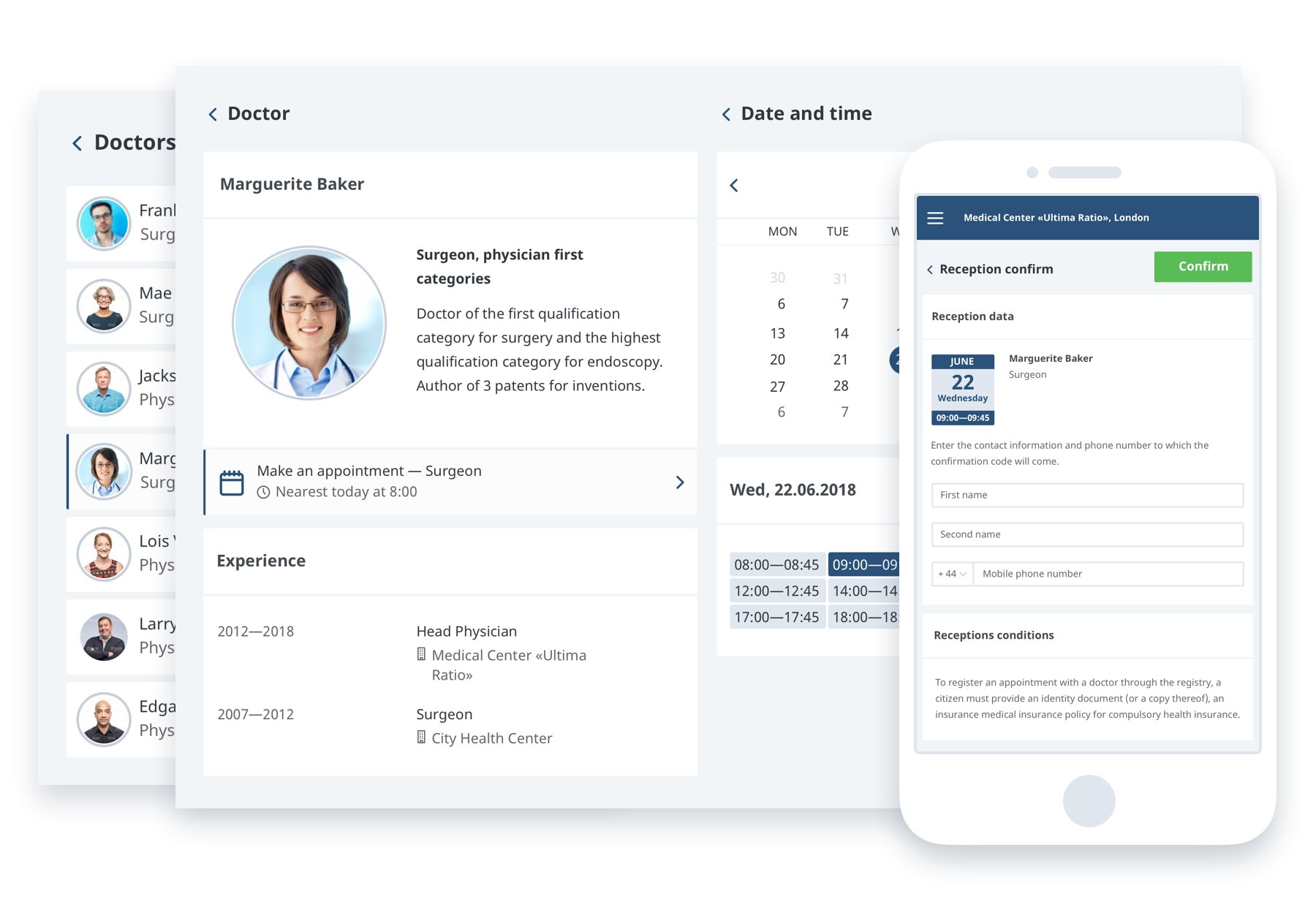
Medesk also has EHR and billing modules, making it an excellent choice for clinics looking to improve their check-out processes. By connecting these systems, it ensures that all patient information is updated, billing is processed accurately, and follow-up appointments are scheduled without a hitch. To ensure compliance with age-related regulations and protect vulnerable patient groups, clinics can integrate an effective age verification solution that streamlines identity checks while maintaining a smooth patient experience.

The platform is a complete system that automates all daily workflows in a clinic:
- charting
- EMR
- reporting
- billing
- CRM
- appointment reminders
- task management.
And to make the patient registration process as easy as possible and completely remote, you can use the Telemedicine module and conduct online consultations with patients. Patient data is stored on secure servers, so you don't have to worry about it being hacked, stolen, or lost.
Pricing
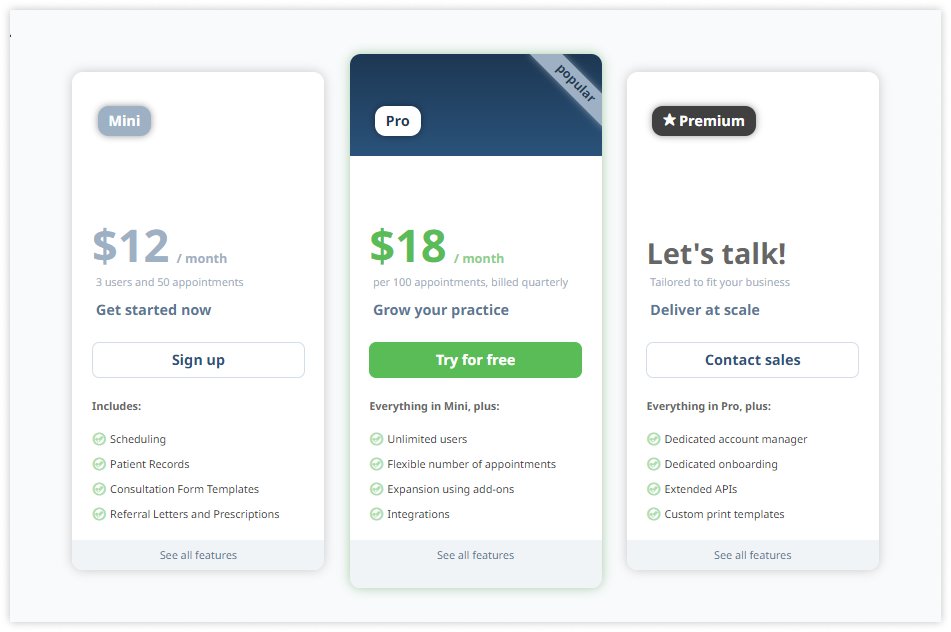
Medesk offers a free trial for 15 days. Unlike user-based subscription plans, you pay for the number of appointments. This system is much more favourable, as most PMS consider even someone who has just registered on the platform and rarely logs in as a user.
Discover more about the essential features of Medesk and claim your free access today!
Explore now >>#2. Phreesia
Phreesia is a user-friendly patient intake and check-in experience software that offers a platform for streamlining patient interactions. It allows patients to check in from their own devices or through in-office kiosks, reducing the need for paper forms. Phreesia’s software is designed to integrate with EHR systems.
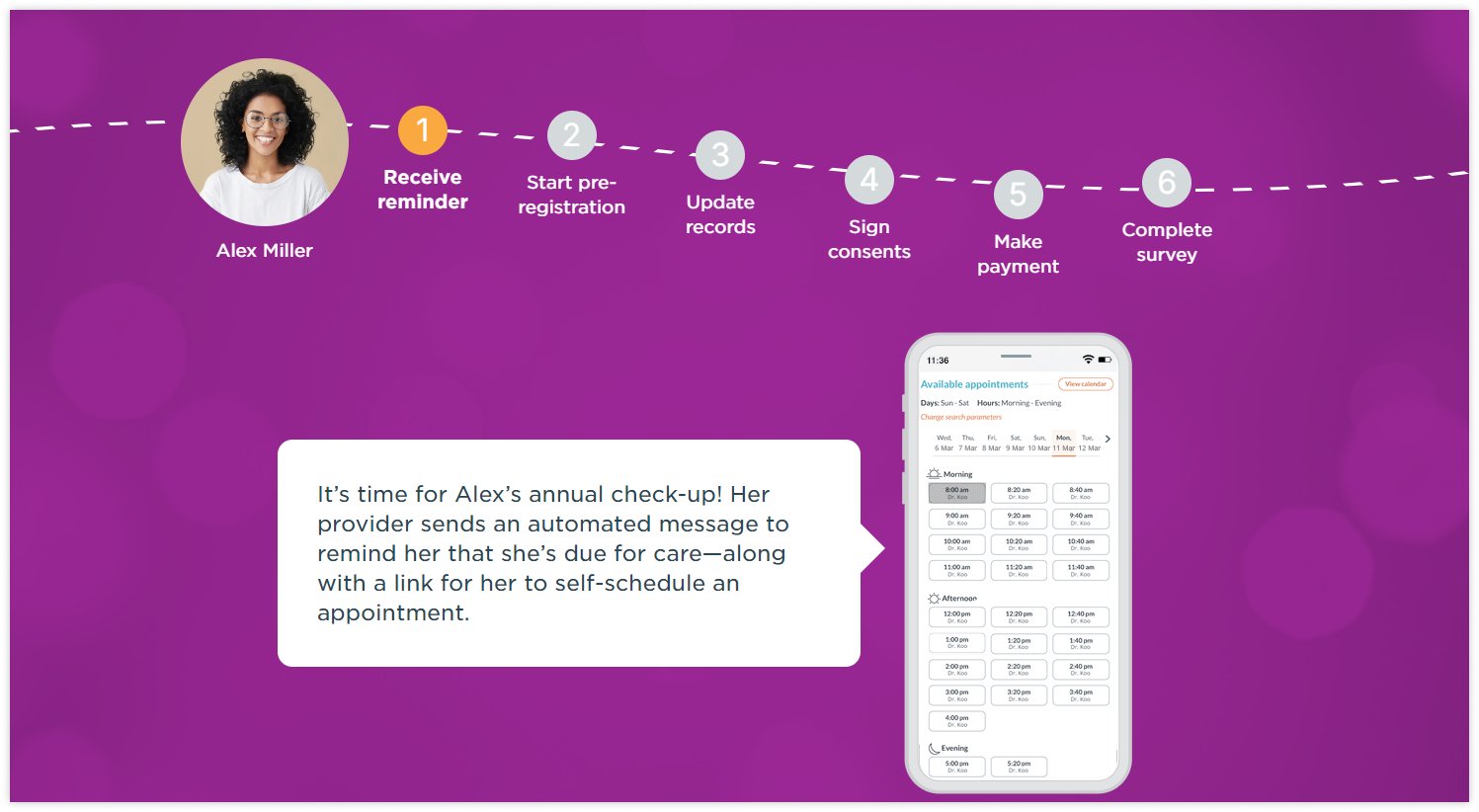
The platform offers the application PadX, which turns any iPad into a convenient kiosk for registration with wayfinding features. Phreesia supports the function of pre-registering the patient for an appointment: the patient receives a link in a message or by mail. In the same interface, the patient can update their data in case they have changed their address, job, or insurance information.
After the appointment, the patient receives a message asking them to complete a survey, which helps the provider collect feedback and improve marketing campaigns and the service as a whole.

Additionally, Phreesia supports digital consent forms and payment processing, making the check-out process smoother and more efficient.
Pricing
Phreesia offers custom pricing based on the size and needs of the practice. This means costs can vary, and potential users need to contact Phreesia for a personalised quote. The starting cost is $250 per month.
#3. Medical Check In
Medical Check In is a HIPAA-compliant, straightforward patient check-in solution primarily used in busy medical offices and hospitals. The software focusses on automating the check-in process through patient self-service kiosks that they use upon arrival.
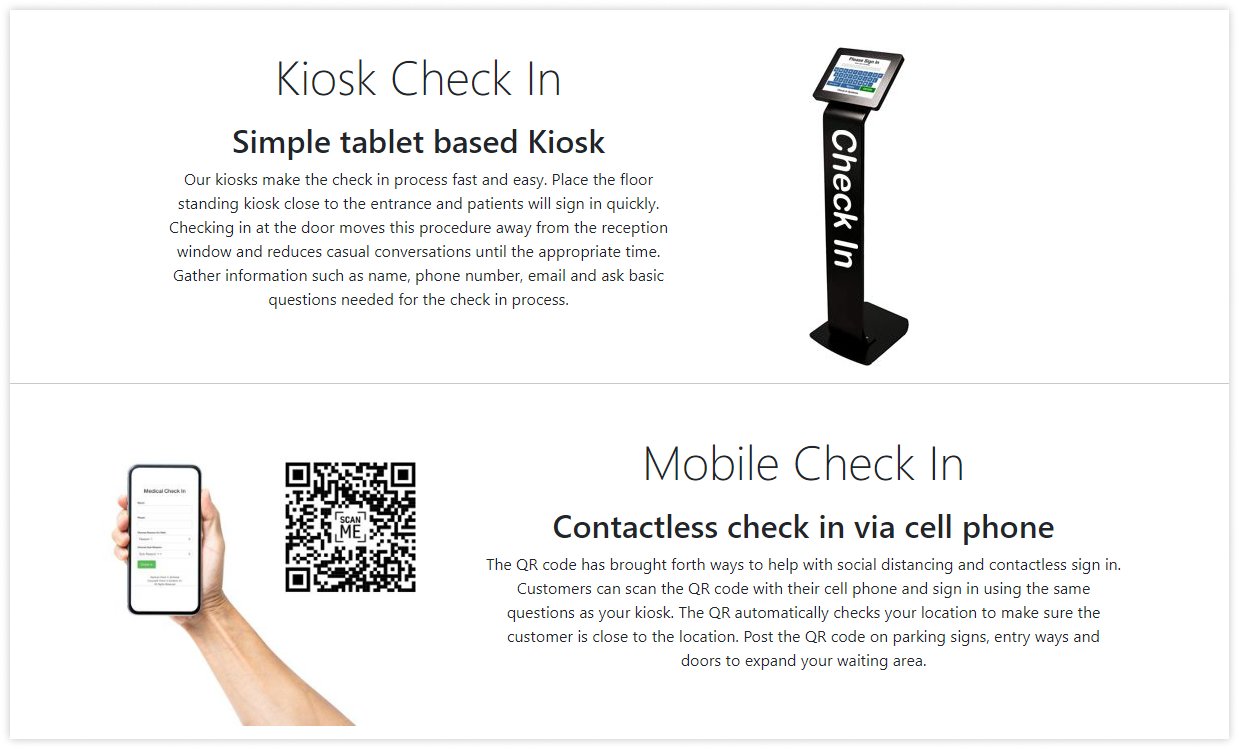
These kiosks allow patients to enter their information, select the reason for their visit, and notify the healthcare provider of their arrival. The system can also capture signatures and scan ID cards or insurance cards.
Mobile Check In allows patients to scan a QR code with their smartphone and check in just like at a kiosk. You can place a QR code in car parks, on clinic doors to reduce check-in time and expand your waiting area. You can also add a function to call patients for appointments by text message.

The registrars see the list of customers on the display as soon as they register. When staff members press the Confirm button, a timestamp is placed on the record, and the name of the staff member who checked the item is added. The patient is removed from the active list when a staff member clicks check out.
Pricing
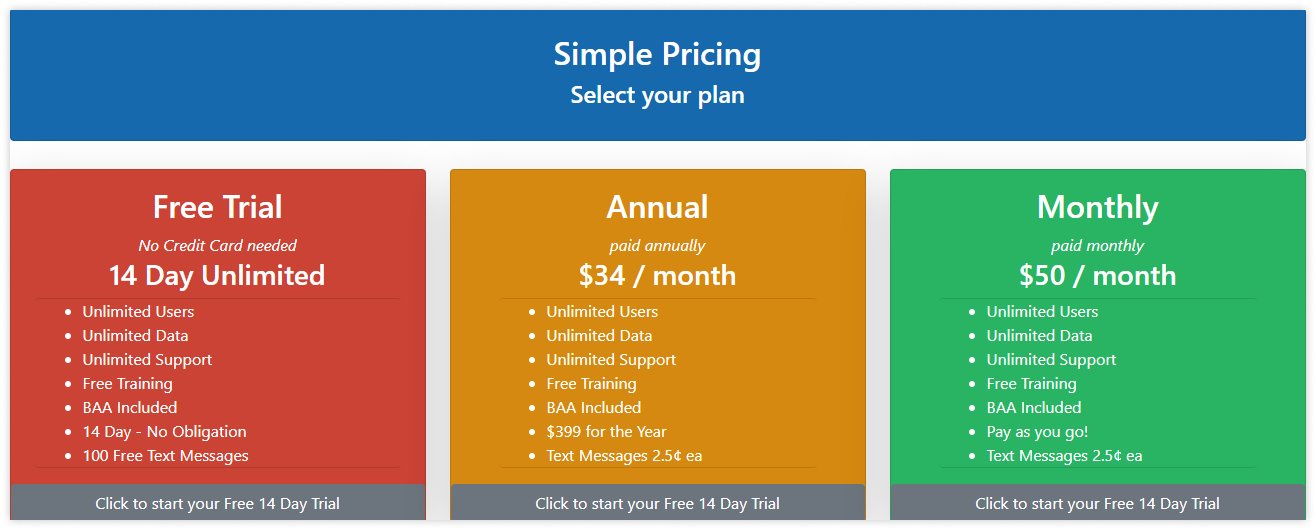
Medical Check In offers two pricing plans and a free 14-day trial. The cost starts at $34 per month for an annual subscription.
#4. PracticeEHR
PracticeEHR is a practice management solution tailored for small to medium-sized healthcare practices. Among its many features, the patient check-in module stands out for its integration with the overall EHR system.

PracticeEHR allows patients to check in online before their appointment or at the office through a kiosk. You can customise patient forms so that they contain the exact demographics required for your practice or specialty.
This software also supports appointment scheduling, insurance verification, and automatic updates to the patient’s EHR once they check in.
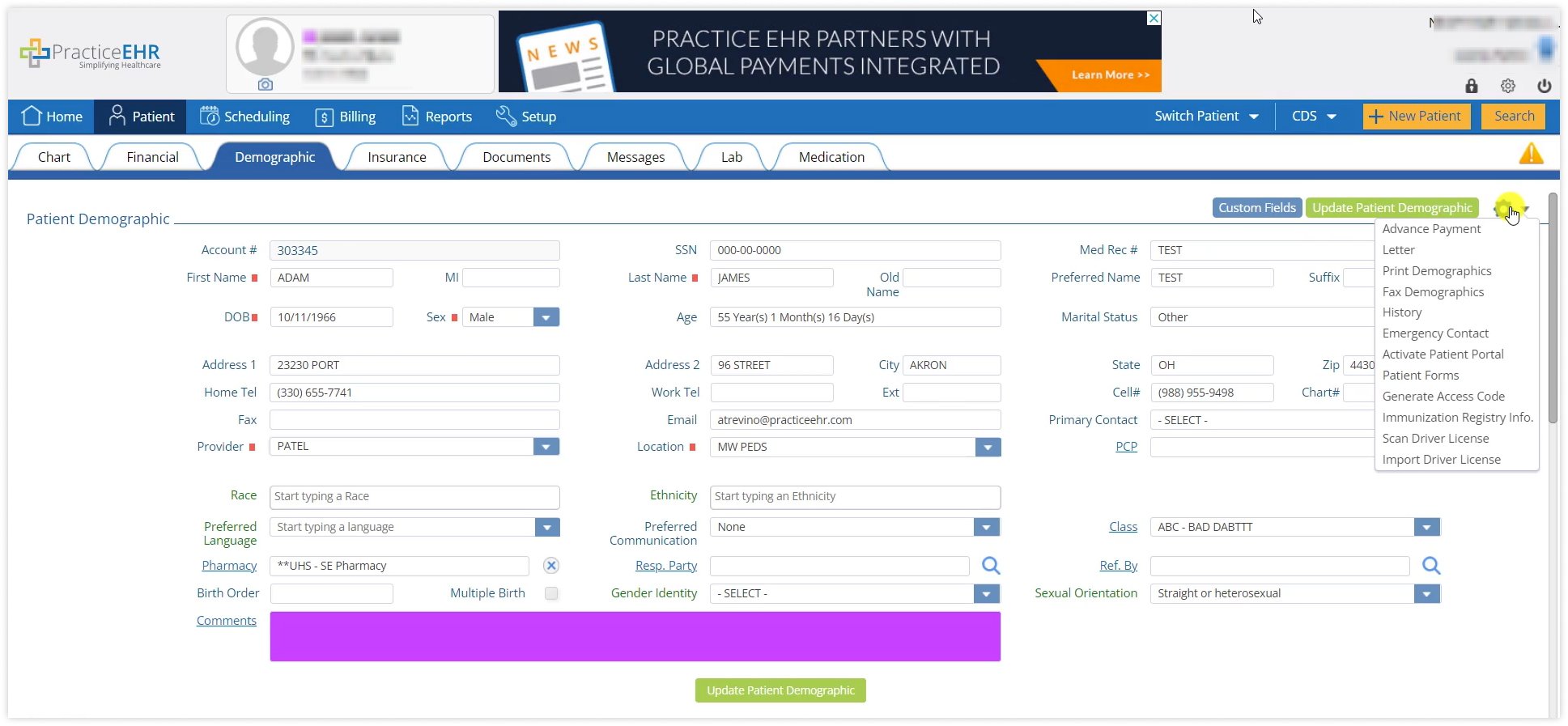
Additionally, PracticeEHR includes billing and claims management tools, making it easier for practices to manage the financial aspects of patient visits.
Pricing
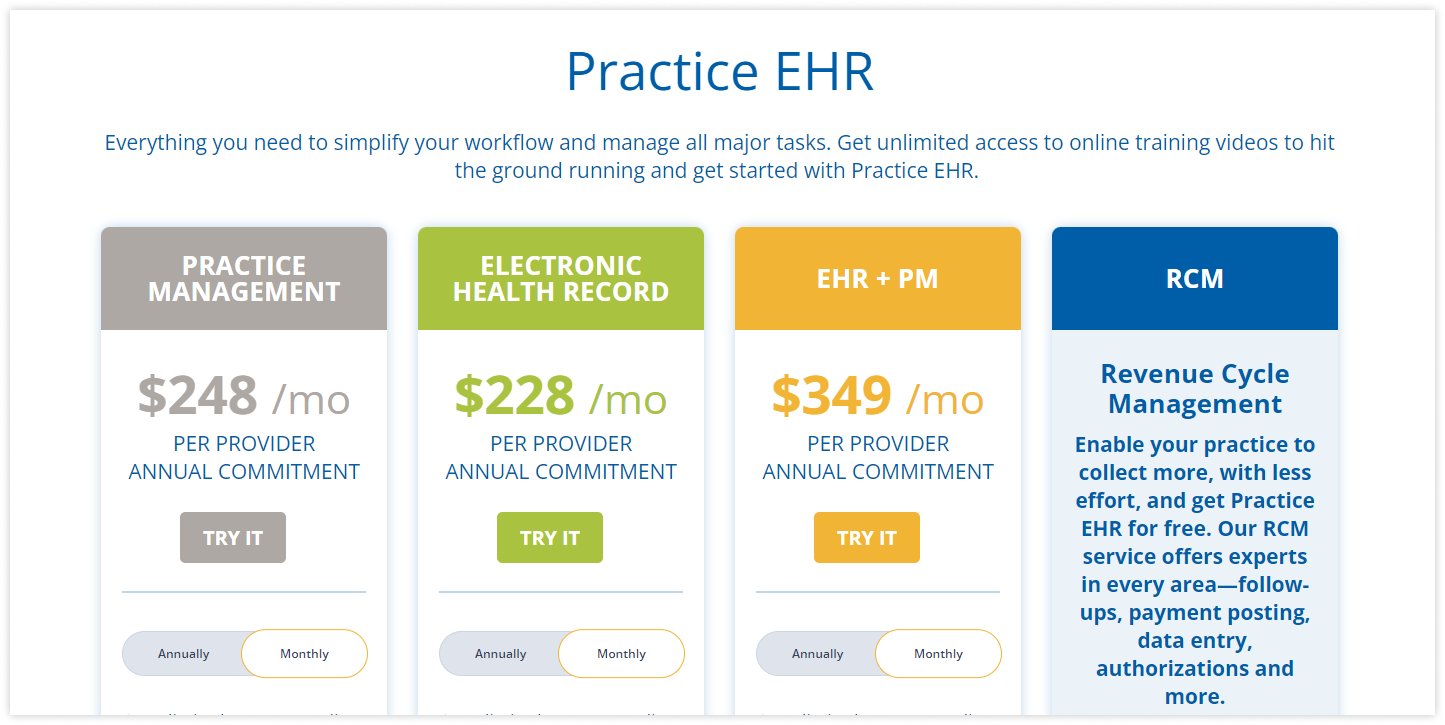
PracticeEHR offers a subscription-based pricing model, with plans starting from $248 per provider per month. This cost includes access to all the essential practice management features, with additional costs for advanced features or more extensive customisation.
The Kiosk function is paid additionally. It costs $60 per month per provider.
Ready to get into practice and get access to secure intake forms, EHRs, and more? Click the button below:
